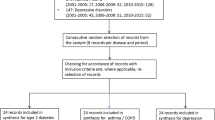Abstract
OBEJCTIVE: Although cost-effectiveness analyses (CEAs) have been advocated as a tool to critically appraise the value of health expenditures, it has been widely hoped that they might also help contain health care costs. To determine how often they discourage additional expenditures, we reviewed the conclusions of recently published CEAs.
DATA SOURCES: A search of the Abridged Index Medicus (a subset of MEDLINE designed to afford rapid access to the literature of “immediate interest” to the practicing physician) between 1990 and 1996.
STUDY SELECTION: We only included articles that reported an explicit cost-effectiveness (CE) ratio (a cost for some given health effect) in the abstract.
DATA ABSTRACTION: From each abstract, we collected the value for the incremental CE ratio and the measure of health effect (life-years, quality-adjusted life-years [QALYs], other). We then categorized the authors’ conclusion into one of three categories: supports strategy requiring additional expenditure, no firm conclusion, and supports low-cost alternative. Finally, we obtained the article and collected information on funding source.
DATA SYNTHESIS: Among the 109 eligible articles, the authors’ conclusion supported strategies requiring additional expenditure in 58 (53%) and supported the low-cost alternative in 28 (26%). We then focused on the 65 articles reporting either life-years or QALYs. Cost-effectiveness ratios ranged from $400 to $166,000 (per life-year or QALY) in the 39 articles (60%) in which authors supported additional expenditure, and ranged from $61,500 to $11,600,000 in the 13 articles (20%) in which authors supported the low-cost alternative. Despite identifying similar CE ratios, authors arrived at different conclusions in the overlapping range ($61,500 to $166,000). Of the 10 articles acknowledging industry funding, 9 supported a strategy requiring additional expenditure (p=.01 as compared with those without such funding).
CONCLUSIONS: Authors of CEAs are more likely to support strategies requiring additional expenditure than the low-cost alternative. There is no obvious consensus about how small the CE ratio should be to warrant additional expenditure. Finally, concerns about funding source seem to be warranted.
Similar content being viewed by others
References
Detsky AS, Naglie G. A clinician’s guide to cost-effectiveness analysis. Ann Intern Med. 1990;113:147–54.
Eddy DM. Oregon’s methods: did cost-effectiveness fail? JAMA. 1991;266:2135–41.
Eddy DM. Cost-effectiveness analysis: a conversation with my father. JAMA. 1992;267:1669–75.
Thompson MS. Benefit-cost analysis for program evaluation. Beverly Hills, Calif: Sage; 1980.
Warner KE, Hutton RC. Cost benefit and cost-effectiveness analysis in health care. Med Care. 1980;18:1060–84.
Weinstein MC, Stasson WB. Foundations of cost-effectiveness analysis for health and medical practice. N Engl J Med. 1977;296:716–21.
Doubilet P, Weinstein MC, McNeil BJ. Use and misuse of the term “cost effective” in medicine. N Engl J Med. 1986;314:253–6.
Eddy DM. Cost-effectiveness analysis: is it up to the task? JAMA. 1992;267:3342–8.
Eddy D. Cost-effectiveness analysis: will it be accepted? JAMA. 1992;268:132–6.
Eddy DM. Cost-effectiveness analysis: the inside story. JAMA. 1992;268:2575–82.
Udvarhelyi S, Graham AC, Rai A, Epstein AM. Cost-effectiveness and cost-benefit analyses in the medical literature. Ann Intern Med. 1992;116:238–44.
Smith TJ, Hillner BE, Desch C. Efficacy and cost-effectiveness of cancer treatment: rational allocation of resources based on decision analysis. J Natl Cancer Inst. 1993;85:1460–74.
Hillman AL, Eisenberg JM, Pauly MV, et al. Avoiding bias in the conduct and reporting of cost-effectiveness research supported by pharmaceutical companies. N Engl J Med. 1991;324:1362–5.
Kassirer JP, Angell M. The Journal’s policy on cost-effectiveness analyses. N Engl J Med. 1994;331:669–70.
Panel on Cost-effectiveness in Health and Medicine. Cost-effectiveness in Health and Medicine: Project Summary. Washington, DC; Office of Public Health and Science; 1996.
Russell LB, Gold MR, Siegel JE, Daniels N, Weinstein MC, for the Panel on Cost-effectiveness in Health and Medicine. The role of cost-effectiveness analysis in health and medicine. JAMA. 1996;276:1172–7.
Weinstein MC, Siegel JE, Gold MR, Kamlet MS, Russell LB, for the Panel on Cost-effectiveness in Health and Medicine. Recommendations of the Panel on Cost-effectiveness in Health and Medicine. JAMA. 1996;276:1253–8.
Siegel JE, Weinstein MC, Russell LB, Gold MR, for the Panel on Cost-effectiveness in Health and Medicine. Recommendation for reporting cost-effectiveness analyses. JAMA. 1996;276:1339–41.
Laupacis A, Detsky AS, Tugwell PX, Feeny D. How attractive does a new technology have to be to warrant adoption and utilization? Tentative guidelines. Can Med Assoc J. 1992;146:473–81.
Dickersin K. The existence of publication bias and risk factors for its occurence. JAMA. 1990;263:1385–9.
Author information
Authors and Affiliations
Additional information
The views expressed herein do not necessarily represent the views of the Department of Veterans Affairs or the United States Government.
This work was supported in part by a VA Health Services Research & Development (HSR&D) Merit Review Award (92-002). Mr. Azimi is a fourth-year medical student at the Dartmouth Medical School and was supported by the summer research assistantship program of the American College of Physicians (New Hampshire Chapter).
The authors are indebted to John Birkmeyer, MD, and Rob Pritchard, MD, in the Departments of Surgery and Medicine at our Veterans Affairs Hospital and Jonathan Skinner, PhD, in the Department of Economics at Dartmouth College for their valuable critique.
Rights and permissions
About this article
Cite this article
Azimi, N.A., Welch, H.G. The effectiveness of cost-effectiveness analysis in containing costs. J GEN INTERN MED 13, 664–669 (1998). https://doi.org/10.1046/j.1525-1497.1998.00201.x
Issue Date:
DOI: https://doi.org/10.1046/j.1525-1497.1998.00201.x




